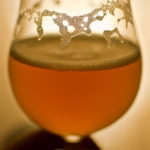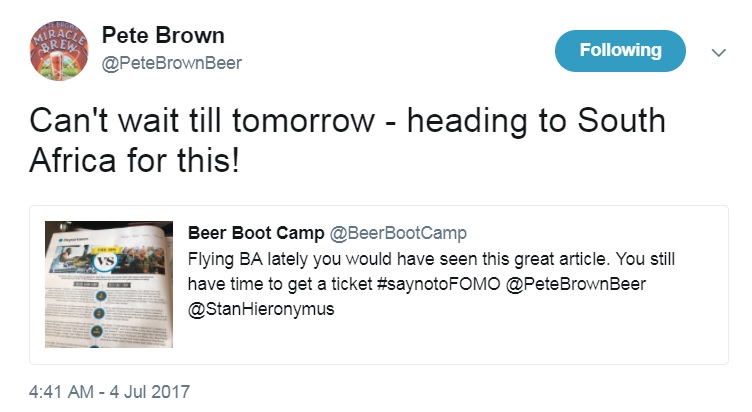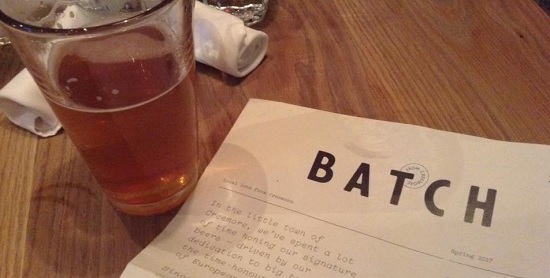Nothing slows down life as much as three weeks of the freezing weather that we are just about to get a break from. Well, that and regularly keeping track of the beery news again. It’s been since November since I started back up. I was last August’s jaunt as Stan’s intern that did it, I suppose. Give me a few years. I might get reasonably good at it. Maybe. Sorta. Bet I pack it in come spring.
Anyway, first up, all that hope and rage you have balled up into the narrative that moderate alcohol is good for you? It’s very likely a crock. Why? Because “…low-volume drinkers may appear healthy only because the ‘abstainers’ with whom they are compared are biased toward ill health.” My take? If you regularly wake up hungover you are likely hurting yourself. Start with a few liver function tests.
Crap. Eric Asimov has mentioned Prince Edward County wines in The New York Times. I’ll never be able to afford to drink the local stuff now.
More bad news? Why not? The sudden shutting of central New York’s venerable Saratoga Brewing was covered in great detail by central New York’s venerable Don Cazentre. It’s not that often that beer business news gets covered as business news but Don is regularly the one doing it. Another form of the death of the dream of national big craft – along with, you know, less and less of the stuff being sold. Hail the new boss! Local murky gak in a sterile monoculture branded taproom where everyone wants to tell you about how great the beer is. Now, that’s my kind of entertainment.
Now, how about something positive? I definitely award the best long writing this week to the two part essay by Matthew Lawrenson on pub life for the perspective of someone with autism:
I’ve been told that people are wary of me due to my “beer blogging’s greatest monster” reputation and are surprised when I’m more anxious and less obnoxious than they’ve been lead to believe. All I can say is that, usually, things are rarely what people expect them to be.
My favourite thing about the essay is how plainly described it all is. Matthew treats the subject objectively, with the respect it deserves. Very helpful. By way of a bit of contrast, because it’s important to keep this dynamic, Jordan took on the argument being made by Canada’s macro brewers about our excise tax regime and found it seriously lacking, working both the numbers as well as his sarcasm skills:
…let’s do the math. Wow! The average price of a case of beer is $36.50 if you go by the examples that Beer Canada have used. Now, let’s see. 24 x 341ml = 8,184 ml. How many ml in a HL? Wow. That’s 12.218 cases of beer per hectolitre. That’s 293 bottles and a low fill! Hmmm. What’s $31.84/293? Oh wow. It’s 10.8 cents a bottle in federal excise!
I was left (again) with the feeling that all cost inputs deserve that level of scrutiny. It’s we the buyers and our cash that runs the whole industry, after all. Why shouldn’t we get a simple straight answer? Consider J.J. Bell’s news today that he is dropping Harvey’s from his pub’s line up because “They’ve been using their strong position in the local market to price gouge, pure and simple.” Now, that’s some plain speaking about value.
How did we get here? Maybe beer 5,000 years ago in Greece. Merryn Dineley ordered the article so I am looking forward to greater analysis that just the abstract but the reference to “remains of sprouted cereal grains as well as cereal fragments from the Bronze Age” sure seems interesting.
Not beer: Al Tuck. Listen for a bit. There you go. Feel better, right?
Coming to the end but still enough time for my favourite use of Twitter in beer-world for 2018. Josh Noel’s fictional life of John Holl started on New Years Day this way:
On a Thursday evening in 1986, as a spring storm pounded the Dallas-Ft. Worth airport, John Hall sat in an airplane on the rain‐glazed tarmac and did something he would recount for the rest of his life. He reached for a magazine.
Finally. All things come to an end. And speaking of ends – bumboats. Say it fast five times over out loud… in public: Bumboats! Bumboats! Bumboats! Bumboats! Bumboats!” Hah – made you do it.
Laters.





















